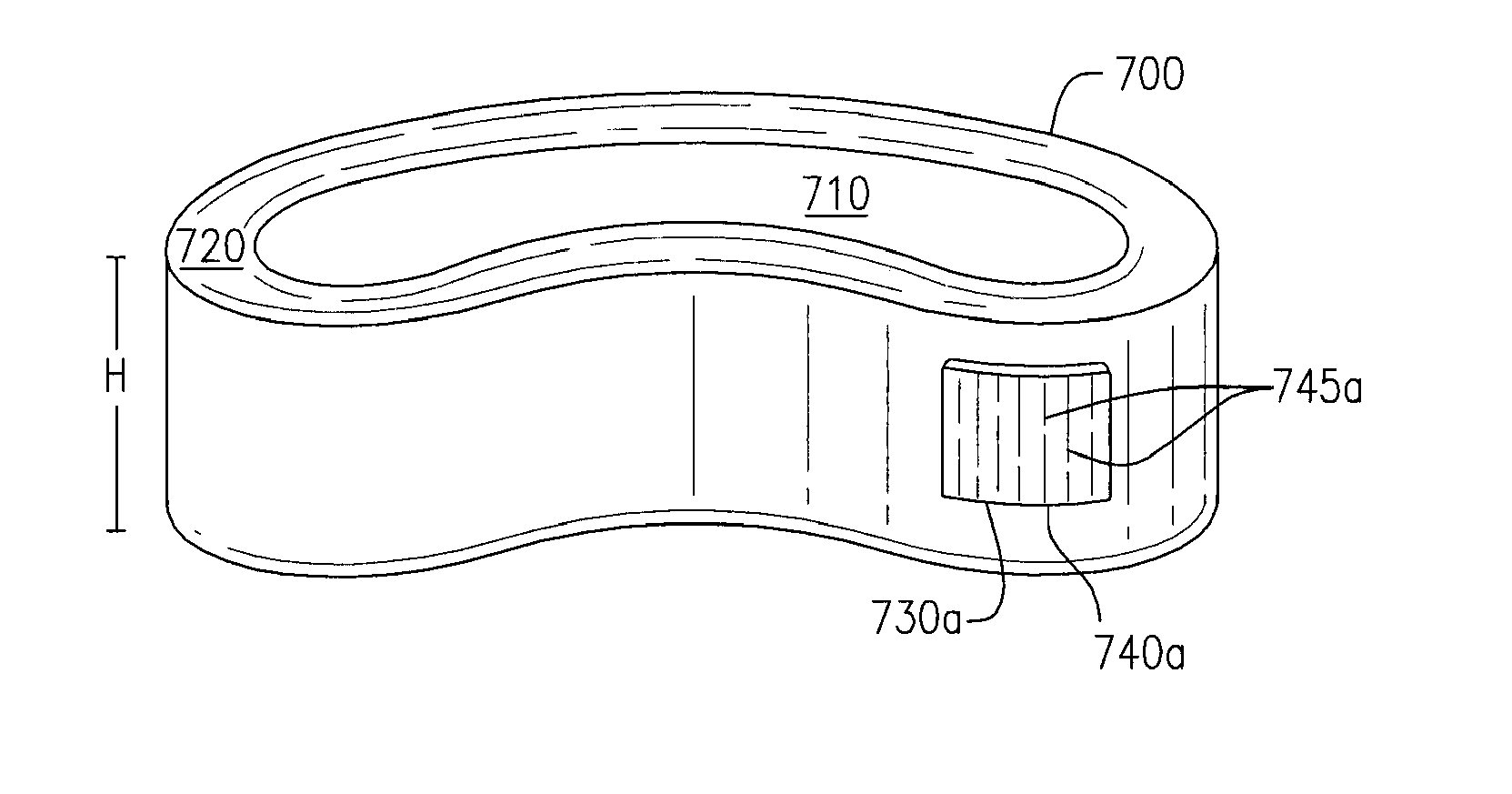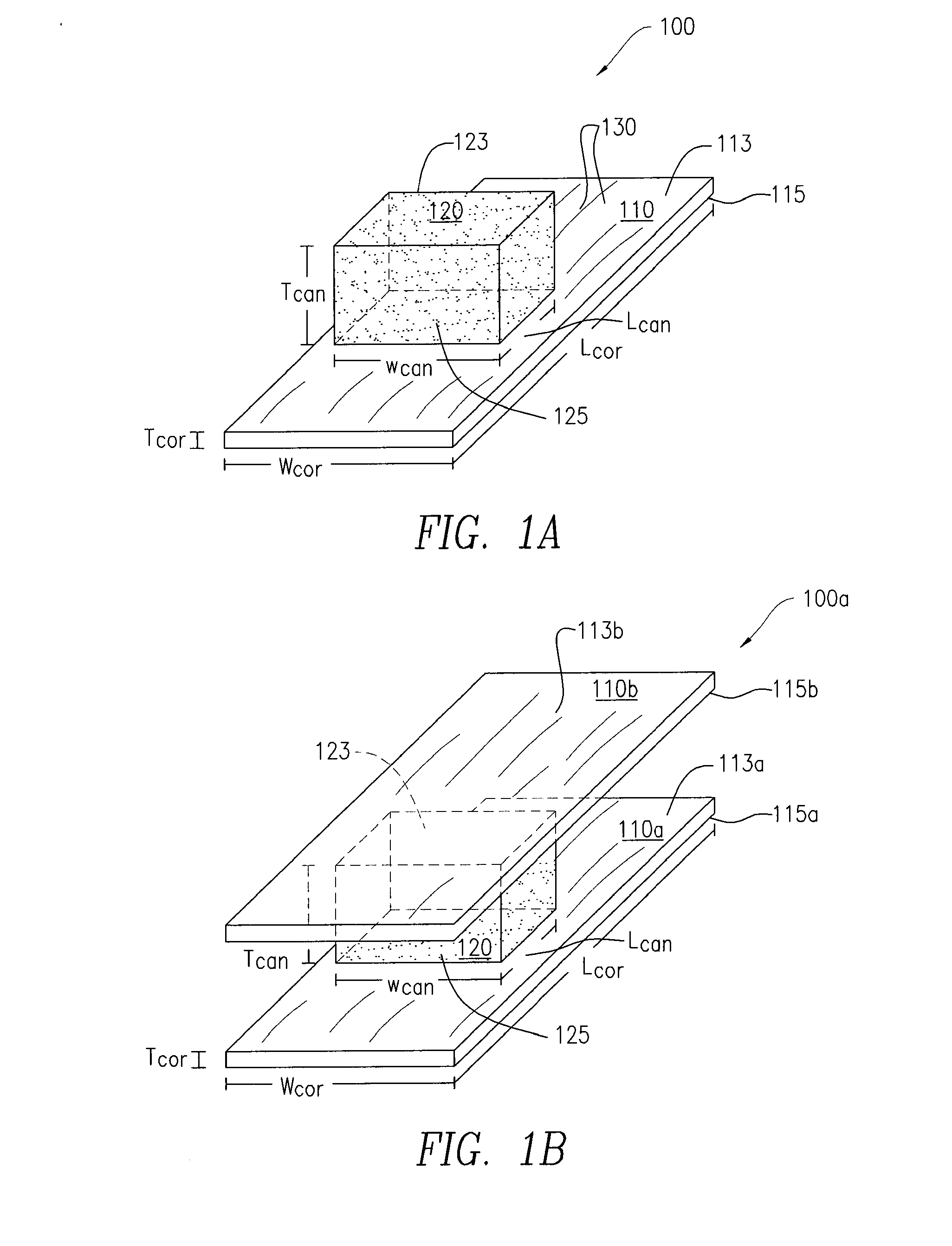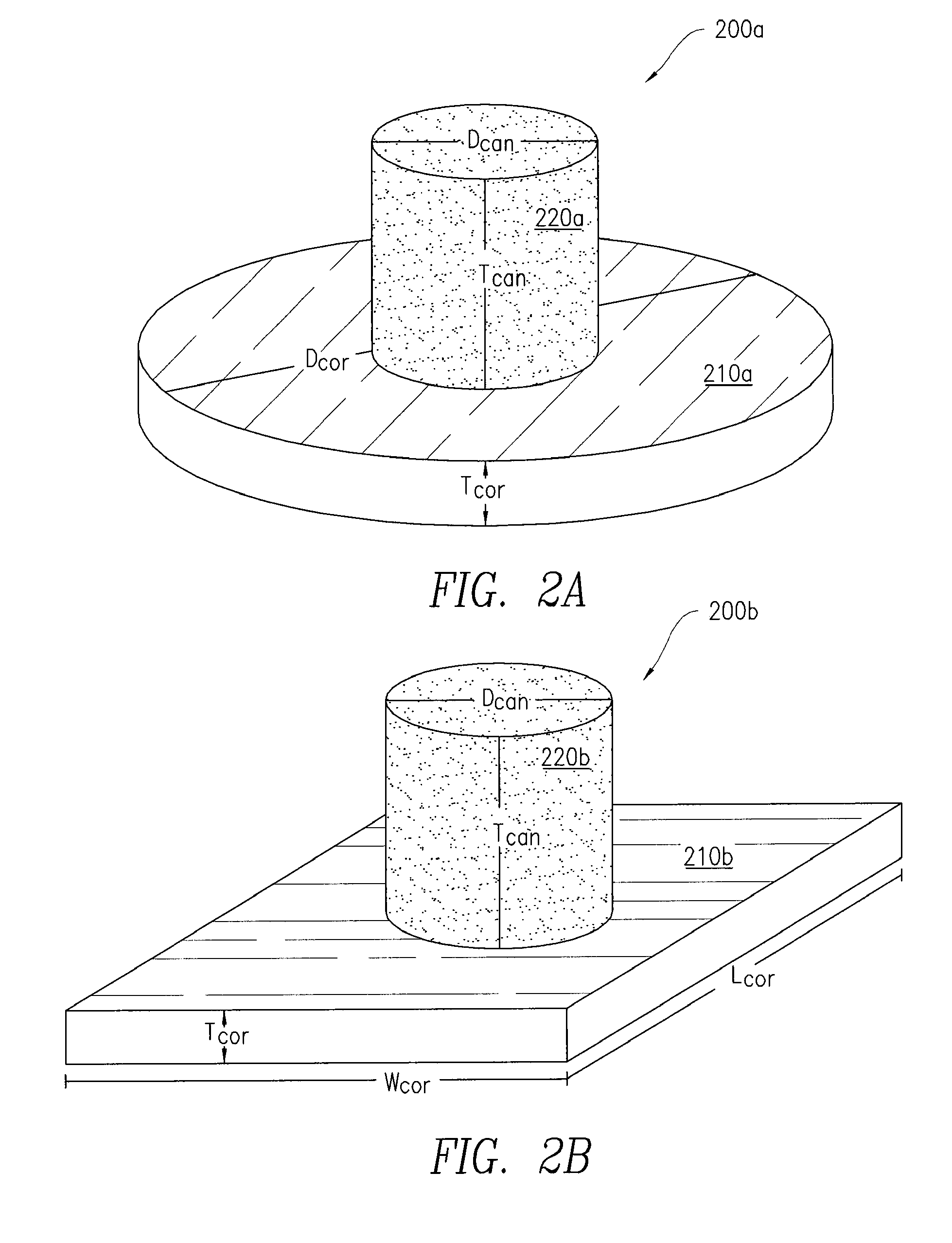Shaped implants for tissue repair
a tissue repair and implant technology, applied in the field of tissue repair implants, can solve the problems of reduced np height, leg pain, loss of muscle control, etc., and achieve the effect of reducing the height of the np, reducing the size of the np, and reducing the degeneration or displacement of the spinal dis
- Summary
- Abstract
- Description
- Claims
- Application Information
AI Technical Summary
Benefits of technology
Problems solved by technology
Method used
Image
Examples
example 1
Preparation of an Implant
[0097]Two sets of donor ilia (two ilia each from a 27 year old male and a 51 year old male with a respective yield of 12 implant prototypes and 10 implant prototypes) were selected for the preparation of three dimensional bandage-shaped implant prototypes to be utilized for mechanical testing in the context of annulus fibrosus repair.
[0098]The thicker regions of donor ilia were cut into 1 cm×2 cm cross-sections (size specification shown below) using a bandsaw.
LCORTWCORTHCORTDCANCHCANCVOFFSETHOFFSET(mm)(mm)(mm)(mm)(mm)(mm)(mm)2010108561
[0099]Each of the samples contained a relatively thick cancellous layer (>5 mm) sandwiched between two thinner cortical layers. The tissue was cut so that the collagen fibers were oriented either lengthwise or widthwise and the orientation of the collagen fiber was noted. The cut tissue samples were subsequently processed and demineralized.
[0100]Next, using a scalpel, one of the thin cortical layers from each sample was strippe...
PUM
 Login to View More
Login to View More Abstract
Description
Claims
Application Information
 Login to View More
Login to View More - R&D
- Intellectual Property
- Life Sciences
- Materials
- Tech Scout
- Unparalleled Data Quality
- Higher Quality Content
- 60% Fewer Hallucinations
Browse by: Latest US Patents, China's latest patents, Technical Efficacy Thesaurus, Application Domain, Technology Topic, Popular Technical Reports.
© 2025 PatSnap. All rights reserved.Legal|Privacy policy|Modern Slavery Act Transparency Statement|Sitemap|About US| Contact US: help@patsnap.com



